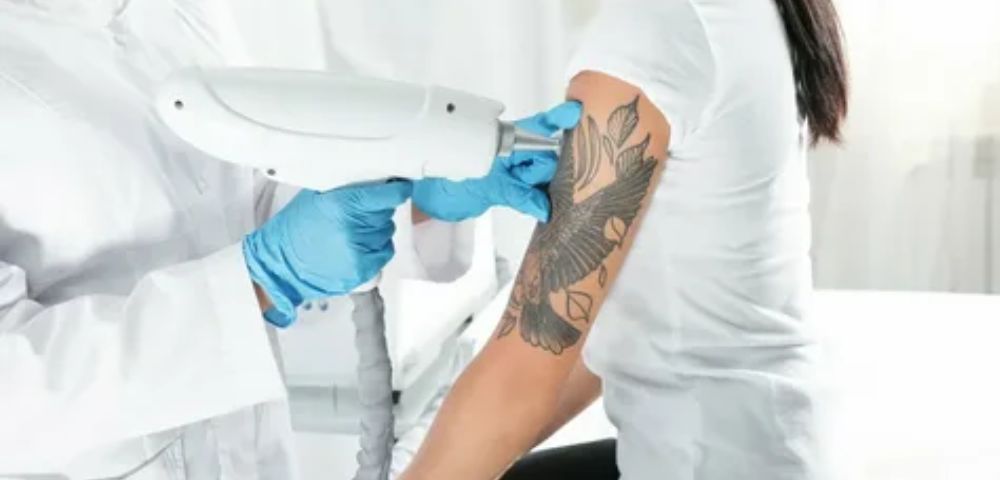
What is Laser Tattoo Removal?
Laser tattoo removal is a minimally invasive procedure that uses concentrated beams of light to break up the ink particles in your tattoo. When these particles are fragmented, your body’s immune system gradually clears them away over several weeks or months. This technique is favored for its precision and effectiveness compared to older removal methods.
How It Works
- Laser Technology: The process uses high-intensity laser pulses that target tattoo pigments without damaging surrounding skin.
- Ink Fragmentation: The laser breaks the ink into smaller particles, making them easier for your body’s natural processes to remove.
- Gradual Fading: As the immune system clears the ink particles, the tattoo gradually fades with each session.
Benefits of Laser Tattoo Removal
- Minimally Invasive: No cutting or suturing is involved.
- Precision: Lasers target specific ink colors with minimal impact on the surrounding skin.
- Customizable Treatments: Treatment can be tailored to the tattoo’s size, color, and depth.
What to Expect During the Procedure
- Consultation: A detailed assessment of your tattoo is performed to plan the treatment.
- Preparation: The area is cleaned, and a topical anesthetic may be applied to reduce discomfort.
- Laser Application: The laser emits controlled pulses to break down the tattoo ink.
Aftercare: Post-treatment care is essential, including keeping the area clean, avoiding sun exposure, and following specific healing instructions
Frequently Asked Questions (FAQ)
Q1: What is laser tattoo removal?
A1: Laser tattoo removal is a procedure that uses concentrated laser beams to break apart tattoo ink particles, allowing the body to naturally eliminate the fragments over time.
Q2: How many sessions will I need?
A2: The number of sessions varies based on factors like the tattoo’s size, color, and age. Most tattoos require multiple sessions, spaced several weeks apart, to achieve optimal results.
Q3: Does the procedure hurt?
A3: Discomfort levels vary by individual, but many patients describe the sensation as similar to a rubber band snapping against the skin. Topical anesthetics and cooling techniques are often used to minimize discomfort.
Q4: Are there any risks or side effects?
A4: Like any procedure, laser tattoo removal has potential risks such as temporary redness, swelling, or changes in skin pigmentation. Rarely, scarring or infection can occur if aftercare instructions are not properly followed.
Q5: How long is the recovery period?
A5: Recovery time is usually short. Most patients can return to normal activities within a day or two. The treated area should be protected from sun exposure and kept clean to ensure proper healing.
Q6: Will the tattoo be completely removed?
A6: Complete removal is possible in many cases, but some tattoos may only fade significantly. The outcome depends on factors like ink type, depth, and the patient’s skin characteristics.
